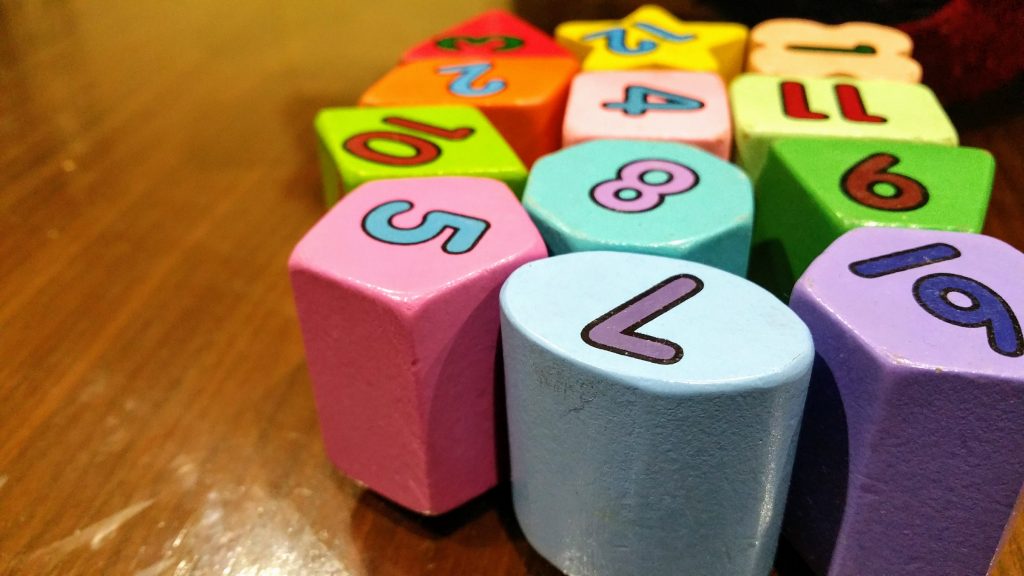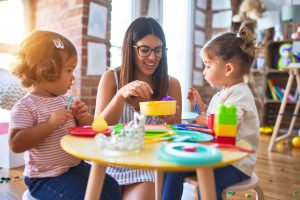By: Karissa Arce
Just like Language and Literacy skills, Numeracy skills can be taught at an early stage, and it doesn’t need to be in a formal manner – as in sitting down for hours making them memorize the number symbols or drilling them with exercises to make them remember how to count in order. Every day, we encounter Math around us. It would be easier for the child to understand the concept of numbers, especially the value of each number when they see objects being associated with the number. Just like what I have mentioned in one of my previous articles, children will learn better if they are able to utilize their senses.
It is important that we model the skills that we want them to learn. Counting can be introduced while they are still small. What we need to remember is that we need to do it gradually. Let’s say you want to start with your 1-year-old child. You can introduce numbers 1 – 3. Like “Look! You have 3 pieces of cookies on your plate. (While pointing at each cookie as you count) 1, 2, 3! 3 pieces of cookies on your plate.” You can increase the amount later on when you see that they are familiar enough. Children often mimic counting. They don’t immediately understand the concept of the number value, but they will learn the numbers in order by listening to you when you count.
Just a very important reminder: Do not rush your child to learn any concept. Being “advanced” does not always mean they are smart. Focus on developing comprehension rather than aiming for them to be quick at grasping everything. When they are able to comprehend and they learn how to use their common sense, it will be easier for them to pick up information. Learning is NOT a race.
Another thing that you should remember when you are teaching your child how to count or numeracy skills in general is that you should also associate their language development. Using complete sentences (I am guilty of this every now and then, sometimes when I am not that careful, I shorten my sentences) will help your child increase their vocabulary and will help them express clearer and also, they will learn how to use words correctly. If you look at my example above, the word “pieces” is a word they can learn the meaning of. By just saying “you have 3 cookies” what does it mean? 3 bags? 3 plates? 3 jars? By narrowing it down and using more specific words, it helps your child associate what they are hearing and what they can see. Language and Numeracy development goes hand in hand.
Children can learn numeracy skills on a daily basis. But how, Ysa? For some parents or caregivers, it’s a challenge for them to create an activity where they can practice numbers or other Math concepts simply because they want to see actual learning. While I understand that it is somewhat important to see an action that determines learning, we have to keep in mind that one activity usually develops more than one skill. So, let’s not stress ourselves. Give your children some simple tasks at home to accomplish. For example, tidying up the toys that they used. How many toys did you take out from the box? If you used 10 different toys, when you tidy up, you also need to put back 10 toys inside the box. Snack time? When the long hand and the short hand are pointing to these numbers then you can have some snack. Every Friday is our game night, today is just Monday, how many more days before Friday? The doctor said, you need to drink at least 8 glasses of water every day, here’s a chart for you so you can record it down whenever you get to finish a glass of water. At the end of the day, you can count and see if you were able to complete it. Simple tasks. And because it’s incorporated into their usual routine, learning will take place without a lot of pressure.
To make it simple, make good use of what you have available at the moment to teach and enrich your child’s skills. It does not need to be rigorous or demanding for them to learn concepts. They just need to do it regularly (but not to the extent that it is already straining) to help them grasp the concept and improve the way they use or apply the skills that they are learning. Every day and every moment is a learning opportunity for children. Some can be taught directly and some they will learn on their own through discovery.




